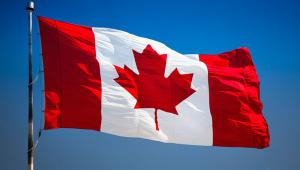The country’s aid levels declined from 0.31% of gross national income in 2012 to 0.26% in 2017, which is below the internationally agreed target of 0.7% of gross national income, the OECD DAC review said.
However, the review added that Canada is seen as a leader in pushing forward with the adoption globally of the United Nations Sustainable Development Goals, which now needs to be translated into “concrete action to increase aid flows”.
The DAC members also welcomed the creation of a new Canadian government department, Global Affairs Canada, formed from the merger of the former aid agency with the department of foreign affairs and trade.
DAC chair Charlotte Petri Gornitzka said: “The creation of the Global Affairs department has made Canada’s approach to foreign policy, trade, development, peace and security much more coherent.
“Canada is also proving to be a central actor in pushing the UN Sustainable Development Goals. It is important to now set out a path to increase aid volumes to add weight to Canada’s global advocacy role.”
The review added that the country should introduce an “ambitious target” for increasing its share of overseas development assistance and set out a path to meet the target, in line with the SDGs.
In 2015, UN members met in Addis Ababa to set out how to finance sustainable development and committed to achieving the target of 0.7% of gross national income for official development assistance.
The report added that the Canadian federal government’s allocation of CA$2bn ($1.5bn) for foreign aid for the next five years was not enough to restore ODA to 2012 levels, and “much less [than] the internationally agreed target”.
The average ratio of ODA for DAC donors in 2016 was 0.32% of GNI, and five committee members have reached the UN target.
In the review, DAC members said: “Canada is stepping up its global leadership in support of a better, safer world that is more just, prosperous and sustainable.”
Amy Mills, spokesperson from Global Affairs Canada, told PF International: “Canada has demonstrated that it has the vision and ability to mobilise international support to make a difference in the lives of the world’s poorest and most vulnerable, including women and girls.”
It added the country is committed to implementing the 2030 Agenda and eradicating poverty.
Last month, the government introduced a national ‘poverty line’ for the first time and announced it would enshrine in law a goal to halve the number of people living in poverty by 2030.
Afghanistan, Ethiopia, Mali, South Sudan and Haiti were the top five recipients of Canadian aid in 2016, the review found.
Each DAC member is reviewed every five years to monitor its performance and hold it accountable for its commitments.







